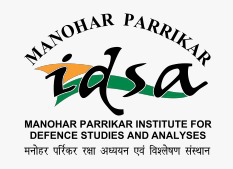The Second Trump Administration and Southeast Asia
Southeast Asia remains a key partner for the US given that both sides have multiple shared interests.
Southeast Asia remains a key partner for the US given that both sides have multiple shared interests.
The US’ immediate response to 9/11 attacks marked the acme of its global hegemonic might, but the 7/10 attacks have fully exposed its receding geopolitical and technological ascendance.
New mini-laterals are taking shape to address the considerable challenges facing the ASEAN-centered regional security architecture.
Even as Vietnam has Southeast Asia's largest installed solar and wind power capacity, coal will continue to be the country’s primary source of energy till 2030.
The Indo-Pacific Maritime Domain Awareness (IPMDA) Initiative aims to enhance regional maritime security via technology and training support.
Ensuring maritime security and freedom of navigation in the Indian Ocean and the wider Indo-Pacific region is key security imperative and one of the key objectives of India’s engagement with the US and other partners.
Given Myanmar’s geostrategic significance and the continuing insurgency threat, disturbances in Myanmar pose a direct and serious policy challenge to India. A calculated realistic approach weighing the evolving ground situation alone will deliver the objectives of India’s foreign policy.
Showing readiness to sign the SEANWFZ treaty seems to be a low-cost, high-return proposition for Beijing. It could be a calculated symbolic gesture having no bearing on the region’s precarious security situation.
India’s Act East policy is delivering results its approach towards Southeast Asia. India’s improving stature in the region along with other key geopolitical players has heralded its arrival as a major regional power in the power matrix. In fact, India is in a unique position in the region in terms of defence and military engagement and must explore this potential further. India satisfies all the attributes needed for robust interaction in the military sphere.
Southeast Asia’s international shipping lanes (ISL) are essential to the economic security of the Asia-Pacific region. Maintaining good order at sea serves to protect regional trade and can be achieved through collaboration between civil maritime security agencies (coast guards). Japan and China both have significant coast guard capabilities and diplomatic influence in the region that could be harnessed to promote civil maritime security cooperation with the countries of the Association of Southeast Asian Nations (ASEAN).



